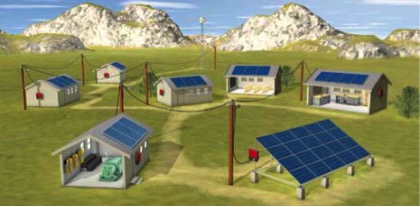
by Aaron Hersum
It is good to be back! After the summer hiatus, I was looking forward to Power to the People: The New Energy Democracy, mostly because I was curious to learn what “energy democracy” is. As it turns out, energy democracy is multifaceted in its meaning, and nuanced in its application.
The dictionary definition of “energy democracy” might read something like this: energy democracy is a response to (1) the unequal distribution of the impacts of energy and climate change, (2) the control wielded by the fossil fuel companies, and (3) racial and socio-economic inequities inherent to the imbalance of power, access and outcomes in the energy industry.
As the evening progressed, however, I came to understand that energy democracy is a movement rooted just as much in social as in environmental justice. And, while the term might seem new and catchy, the concept is simply a new framework for an aspect of sustainability that is easily overlooked: that sustainability, climate change and environmental justice are inextricably linked with other social justice movements, including racial, gender, and economic inequality.
Take for example the fact that the energy industry is mostly controlled by white men of European descent. (Just look at the executive ranks of major oil companies). We need to add representation to this power group from traditionally underrepresented communities, such as people of color and women, and move the center of power out of the board room. Such changes would improve the health, living standards and economic prospects of millions of people around the world.
Fundamentally, however, energy democracy is about the redistribution of power. I am reminded of works such as Manufacturing Consent: The Political Economy of The Mass Media by Edward Herman and Noam Chomsky, and Power: A Radical View by Steven Lukes. Both examine the concept of power, an opaque term that nevertheless plays a pivotal role in all justice issues. Energy democracy recognizes that, in order to prevail in any social justice and sustainability issue, we must confront where and with whom power rests, and then work backwards to create a plan for redistributing power to the people. That is how we drive this kind of change.
Politics is a great place to start to dismantle conventional power hierarchies. And I don’t just mean in the next elections; I’m thinking about the entire political system, especially what we can achieve locally. Business innovation is another huge lever for the redistribution of wealth and power. Microgrids are a prime example of innovation returning power to underserved people.
We also have great power as voters. Nate Stinnett’s talk on modern politics and data analytics last April pointed to a simple and perhaps obvious truth: that politicians, to win votes, will push for whichever issues voters deem important. Making noise about energy democracy virtually guarantees political debate, policies and activities to address the issues tied to the movement. We simply have to make it a priority to be heard.
I want an energy democracy. Do you?
***
Learn more about energy democracy at the Center for Social Inclusion
Image credit: Rural micro-grid by www.sma.de
